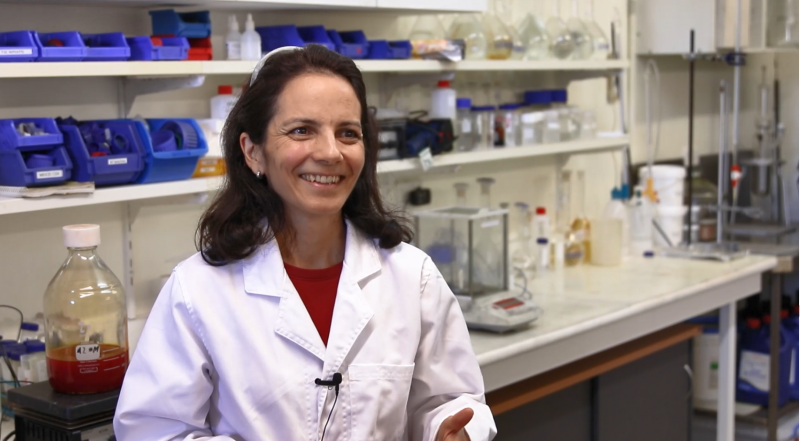Following the flow of a successful career in science
Following the flow of a successful career in science
Redflow Battery Research Scientist Dr Clelia Nelson has forged a 22-year career in science that opened the doors to the renewable energy sector and the chance to work abroad with brilliant minds. Looking back, she can see how an inspirational high school science teacher set her on a life-changing path to a successful, international career.
Flow battery career kick-starter
Clelia’s position at Redflow involves research and development of some of the most important battery components. She is in close contact with different manufacturers to guarantee a reliable supply chain and high-level battery performance. Joining the company in 2013, Clelia’s work at Redflow was her first experience with flow batteries. She says her existing knowledge in electrochemistry (the study of chemical reactions and their impact on energy) and materials science (the analysis of a material’s properties) made for a great fit.

Flow batteries are a rechargeable battery in which a chemical solution flows through the battery’s electrodes, allowing for the conversion of chemical energy into electrical energy. These batteries work perfectly alongside renewable sources like solar and wind and their advantages include superior safety and reliance on low cost and abundant materials for their manufacture.
The chance to work with brilliant minds and establish an international network
Hailing from Portugal, Clelia completed a chemistry degree in 2000 at the University of Braga. The strong practical component of her degree and the knowledge acquired in polymeric (plastic) materials gave her a solid background in analytical work and ignited her passion for materials science.
Clelia’s six-month industrial work placement in the UK as an exchange student triggered her desire to study abroad. When the opportunity to do a PhD in Southampton arrived, Clelia didn’t think twice.
Winning a fully paid scholarship from the Portuguese Government, she embarked on what she describes as her career highlight.
“The PhD at Southampton University gave me the possibility to work with brilliant and yet humble minds, with state-of-the-art equipment and within a fascinating multicultural atmosphere.
“It made me a better scientist and, most importantly, helped me grow into the person I am today”.

After finishing her PhD, Clelia held a short postdoc position at the university and then joined Ilika, a spin-out company using combinatorial chemistry, a chemical processing method that makes it possible to quickly prepare a large number (up to thousands) of compounds in one go.
“This means a scientist can rapidly make large numbers of novel chemical compounds and test their suitability for use in batteries and other energy storage systems,” she says.
While in Southampton, Clelia met her husband Phil, also a PhD student at the University and originally from Australia. In 2012, they moved to Australia with the first two of their three kids, with the younger born here.
“Working overseas enables you to forge a solid international network, both professionally and personally,” she said.
Finding female mentors in science helps your career
Reflecting on her career, Clelia recognises the significance of two female teachers (firstly in high school and later at university) as the inspirational push to pursue science and thrive in the renewables area.
“Their passion for science combined with the understanding of the physical world and strong analytical skills were simply contagious – so too their kindness and respect for others. I have admired both women my entire working life and continue to do so today,” she says.

To other women wanting to enter science, Clelia’s advice is simple.
“Go for it!
“It’s hard work at times, but you will learn essential life skills and gain a better understanding of the world in which we live”.
For more information about Women working in the renewable energy industry check out Women in Renewables | Clean Energy Council.
This is the third part of our series on Women in Renewables. You can view part one, part two and part three.
Last updated: 14 Jun 2023

